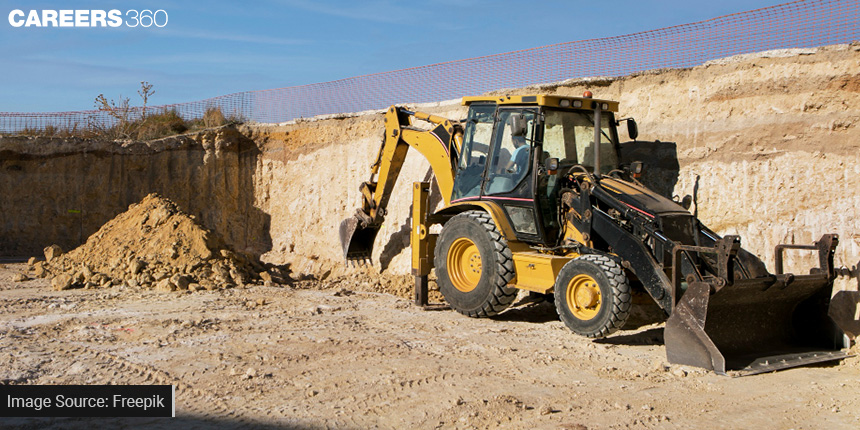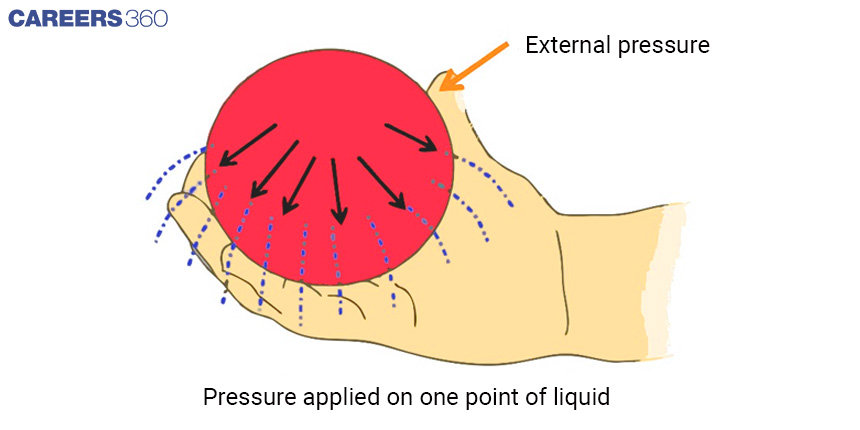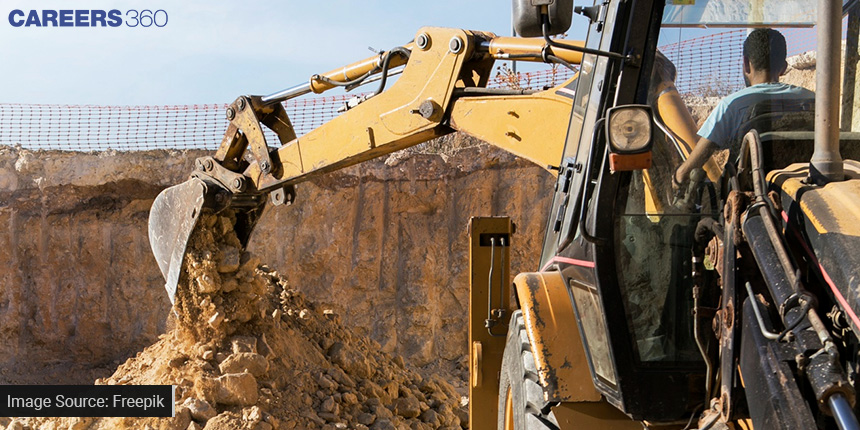What Is The Science of JCB Machines and Hydraulic Mastery?
Have you ever looked at those big machines on construction sites and wondered how they can lift heavy things like they're just picking up toys? Well, it's not magic – it's something called "Pascal's Law." Imagine if you could push something far away just by pushing on something close to you. That's the trick these machines use! Let's explore together how these machines, known as JCBs, work with Pascal's Law to do amazing things in construction. Ready to uncover the secret behind their strength?
This Story also Contains
- Understanding Pascal's Law
- Basics of Hydraulic Systems
- Components of a JCB Machine
- Applying Pascal's Law in JCB Machines

Understanding Pascal's Law

Consider a filled water balloon. You observe the water going in all directions inside the balloon when you press on one side, right? Well, that's a bit like Pascal's Law! According to Pascal's Law, if you push or press on a fluid (such as water or oil) in one place, the push spreads out across the fluid. If you press on one end of an oil-filled pipe, the pressure will be felt at the other end as well. This rule applies whether the fluid is in a small pipe or a large container, as long as it cannot squish or change size.
Consider squeezing a toothpaste tube. The toothpaste flows out evenly from all sides, regardless of which section you squeeze. This is similar to how Pascal's Law operates. Another example is pressing on the surface of a water balloon, which causes the water within to push back in all directions. So, if you have a water-filled hose and press the water at one end, the water will squirt out with force at the other end. It's as though the fluid is carrying a secret message throughout its entirety!
Pascal's Law may sound like a mouthful, but it's only a fancy way of expressing that if you give a fluid a small push, it will spread the force anywhere it can. This law explains how JCB machines use fluids to move their parts, and we'll study more about that next!
Also Read - Advantages of Parallel Wiring in House Circuits
Basics of Hydraulic Systems
Hydraulic systems are mechanisms that use the power of fluid pressure to efficiently operate heavy machinery. Their significance in the realm of heavy machinery lies in their ability to provide both immense force and intricate control, which is essential in industries such as construction and manufacturing, where tasks require the lifting of heavy loads or the precise shaping of materials.
Hydraulic fluid, a specialised liquid medium, is essential in these systems. It has the critical property of being non-compressible, which means it resists volume changes even when subjected to high pressures. When force is applied at one location in the hydraulic system, it is instantly transmitted to other sections, allowing for rapid and accurate force distribution. This one-of-a-kind quality enables hydraulic systems to achieve seamless power transmission, resulting in smooth and regulated heavy machinery movements. Hydraulic systems are a popular choice for applications ranging from construction equipment to manufacturing machines due to their effectiveness in force transmission and precision control.
Components of a JCB Machine

A JCB machine is made up of numerous fundamental components, each of which contributes to its functionality:
>> Hydraulic Cylinders: These are essential components that turn hydraulic energy into mechanical force. They are made up of three parts: a cylinder barrel, a piston, and a piston rod. When hydraulic fluid is injected into the cylinder, it pushes the piston and piston rod, causing linear motion to be generated. This motion is used for operations including lifting, excavating, and pushing.
>> Piston: Pistons are cylindrical components that are used in hydraulic cylinders. When hydraulic pressure is applied to one side of the piston, it moves, transferring force to the linked machinery. Pistons are essential for generating the mechanical motion needed for a variety of processes.
Operator controls are critical in activating hydraulic functions on a JCB machine:
>> Joysticks: These control sticks allow the operators to move various machine components such as the bucket or arm. The operator can control the flow of hydraulic fluid to specific cylinders by using the joysticks, allowing for precise motions.
>> Foot Pedals: Foot pedals are frequently used to operate operations like acceleration, braking, and steering. They can also be set up to manage specific hydraulic processes, giving the user complete control over the machine's actions.
>> Buttons and switches: These controls allow the operator to activate certain hydraulic functions, such as engaging attachments such as a bucket or a grapple. Switches and buttons simplify machine operations by allowing for fast modifications without the need for constant joystick manipulation.
>> Control Panels: JCB machines have control panels that display essential information about the machine's status, hydraulic pressure, temperature, and other factors. This data assists the operator in ensuring the machine's best performance and safety.
Applying Pascal's Law in JCB Machines
When an operator manipulates the machine's controls, such as joysticks or foot pedals, they are essentially exerting force on the hydraulic fluid within the system. According to Pascal's Law, when pressure is applied to a confined fluid, it is transferred unequally in all directions. This means that the force applied to the controls by the operators is passed through the hydraulic fluid, generating a rise in pressure inside the fluid.
This rise in pressure, according to Pascal's Law, is uniformly spread throughout the fluid, acting on the surface of pistons within hydraulic cylinders. The operator's input causes a pressure differential between the piston's two sides. This pressure difference causes the piston and its attached piston rod to move, resulting in mechanical motion.
Consider the hydraulic system of a JCB machine, which has a cylinder with a piston and piston rod. When the operator activates the controls, a valve opens, allowing hydraulic fluid to flow into one side of the cylinder while closing off the other. The hydraulic fluid fills the chamber behind the piston as it flows in. Pascal's Law states that the pressure is uniform throughout the fluid. This pressure presses on the piston's bigger surface area, providing a force that propels the piston and its linked rod forward.
At the same time, the closed valve prevents the fluid on the other side of the piston from escaping. This causes a pressure imbalance, with higher pressure on the fluid inflow side. The movement of the piston, caused by the difference in pressure on either side, creates mechanical effort that can be used for a variety of tasks such as lifting, excavating, or pushing.
At the heart of every JCB machine, Pascal's Law and hydraulic mastery unite, turning operator commands into orchestrated feats of power and precision. These machines stand as a testament to human ingenuity, shaping our world with the fluid dance of force and technology.
Applications for Admissions are open.
As per latest syllabus. Physics formulas, equations, & laws of class 11 & 12th chapters
JEE Main Important Chemistry formulas
Get nowAs per latest syllabus. Chemistry formulas, equations, & laws of class 11 & 12th chapters
JEE Main high scoring chapters and topics
Get nowAs per latest 2024 syllabus. Study 40% syllabus and score upto 100% marks in JEE
JEE Main Important Mathematics Formulas
Get nowAs per latest syllabus. Maths formulas, equations, & theorems of class 11 & 12th chapters
